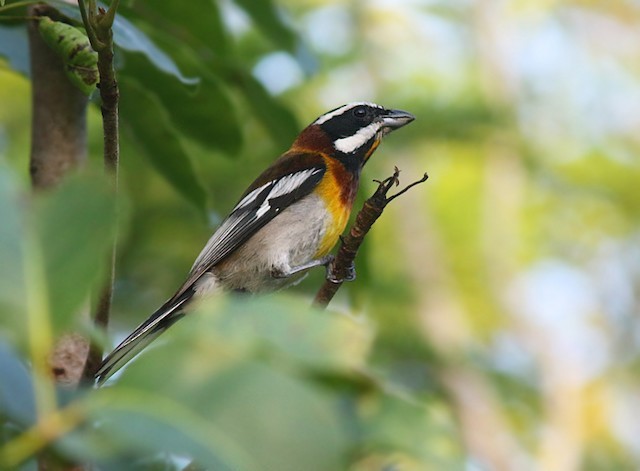Birdfinding.info ⇒ A form of Western Spindalis that is fairly common in its small range. Can often be found in San Miguel at the Cha’an Ka’an Planetarium. Other sites where it is often seen include the San Gervasio ruins, along the road north of the airport, and south of San Miguel around the villages of San José and El Cedral.
“Cozumel Spindalis”
Spindalis zena benedicti
Endemic to Cozumel, where it is fairly common in woodlands, borders, scrub, and settled areas with trees.
Identification
Male is unmistakable: its striking black-and-white head and wing patterns are unique in its range. Compared to the males of spindalises found elsewhere, “Cozumel” is the brownest overall, recognizable by its dark brown nape and chest, brownish-green back, and strikingly heavy bill.
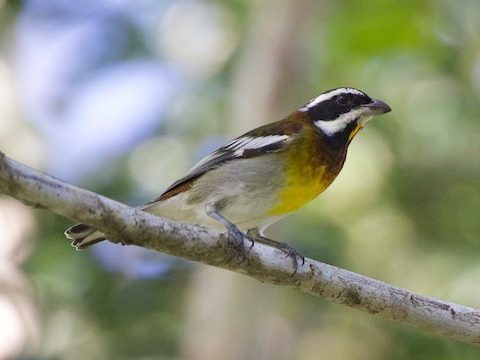
“Cozumel Spindalis,” S. z. benedicti, male. (San José, Cozumel, Mexico; November 19, 2017.) © Cory Gregory
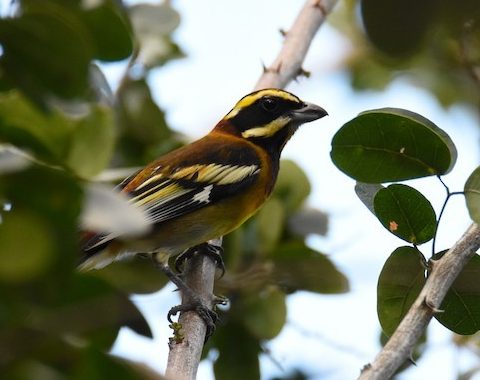
“Cozumel Spindalis,” S. z. benedicti, male with yellow staining on plumage. (Cozumel, Mexico; December 31, 2016.) © Luke Berg
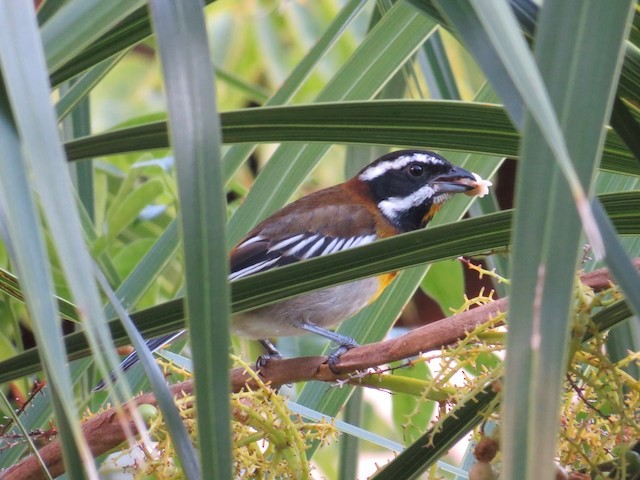
“Cozumel Spindalis,” S. z. benedicti, male. (Cozumel, Mexico; November 1, 2017.) © Thomas Doebel
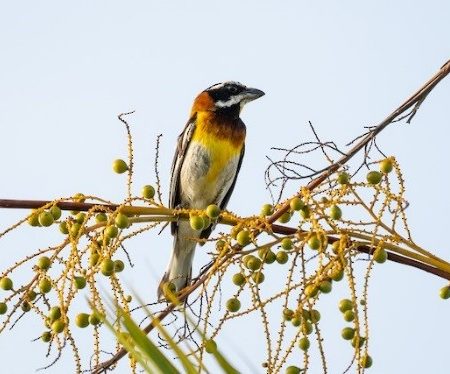
“Cozumel Spindalis,” S. z. benedicti, male. (Cozumel, Mexico; June 30, 2018.) © Patrick V.
Female is olive-gray overall, with a mostly pale throat and subtle, thin eyebrow.
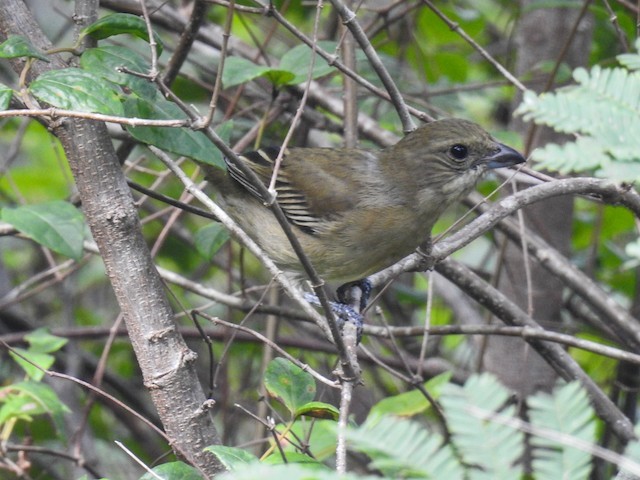
“Cozumel Spindalis,” S. z. benedicti, female. (San Gervasio, Cozumel, Mexico; August 26, 2017.) © Pam Rasmussen
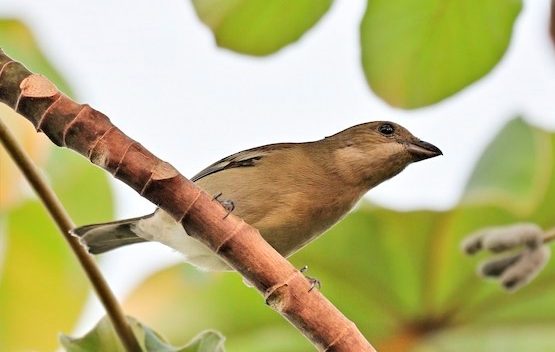
“Cozumel Spindalis,” S. z. benedicti, female. (Cozumel, Mexico; October 23, 2018.) © Luis Guillermo

“Cozumel Spindalis,” S. z. benedicti, male. (Cozumel, Mexico; January 3, 2017.) © Luke Berg
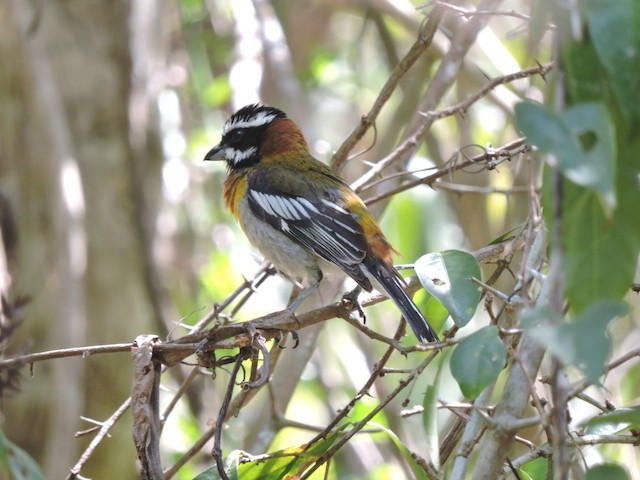
“Cozumel Spindalis,” S. z. benedicti, male. (Cozumel, Mexico; October 18, 2018.) © Noel Rivas Camo
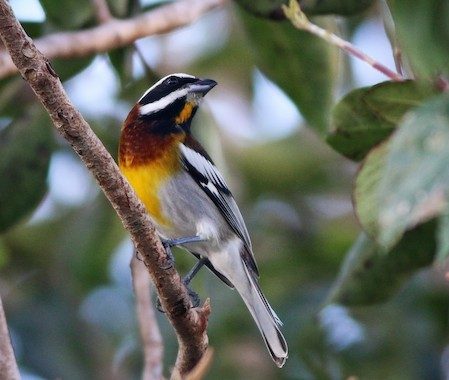
“Cozumel Spindalis,” S. z. benedicti, male. (Cozumel, Mexico; February 5, 2014.) © Ian Davies

“Cozumel Spindalis,” S. z. benedicti, male. (San José, Cozumel, Mexico; November 19, 2017.) © Cory Gregory
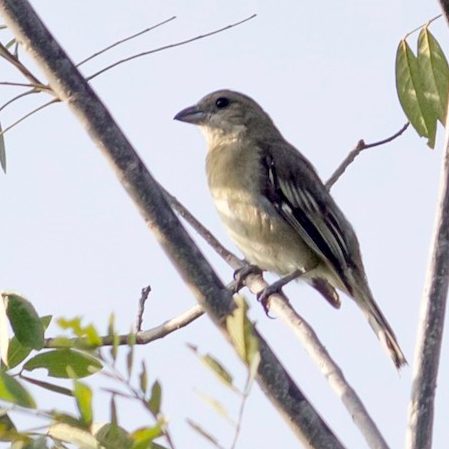
“Cozumel Spindalis,” S. z. benedicti, female. (El Cedral, Cozumel, Mexico; July 30, 2014.) © Alvaro Cervera
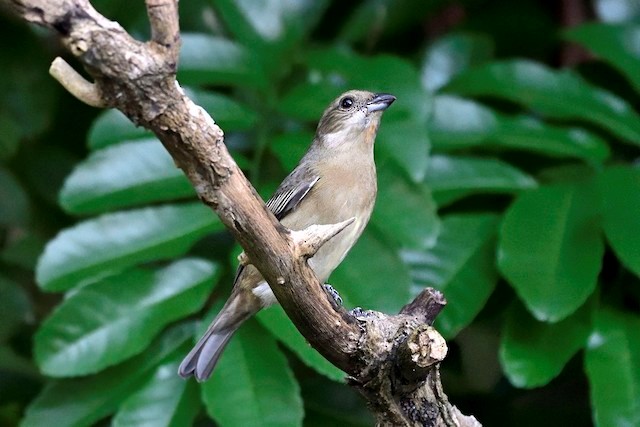
“Cozumel Spindalis,” S. z. benedicti, female. (Cozumel, Mexico; October 24, 2018.) © Luis Guillermo
Notes
Monotypic form, one of five potentially distinct forms of Western Spindalis.
As the most isolated and divergent form of Western Spindalis, “Cozumel Spindalis” seems likely to be recognized as a separate species eventually. Readily distinguishable from other forms of Western Spindalis based on voice, plumage characters, and its heavier bill.
All spindalises were formerly considered to be a single species, the Stripe-headed Tanager, S. zena.
References
eBird. 2018. eBird: An online database of bird distribution and abundance. Cornell Lab of Ornithology, Ithaca, N.Y. http://www.ebird.org. (Accessed December 5, 2018.)
Hilty, S. 2018. Western Spindalis (Spindalis zena). In Handbook of the Birds of the World Alive (J. del Hoyo, A. Elliott, J. Sargatal, D.A. Christie, and E. de Juana, eds.). Lynx Edicions, Barcelona. https://www.hbw.com/node/61832. (Accessed December 5, 2018.)
Howell, S.N.G., and S. Webb. 1995. A Guide to the Birds of Mexico and Northern Central America. Oxford University Press, Oxford.
